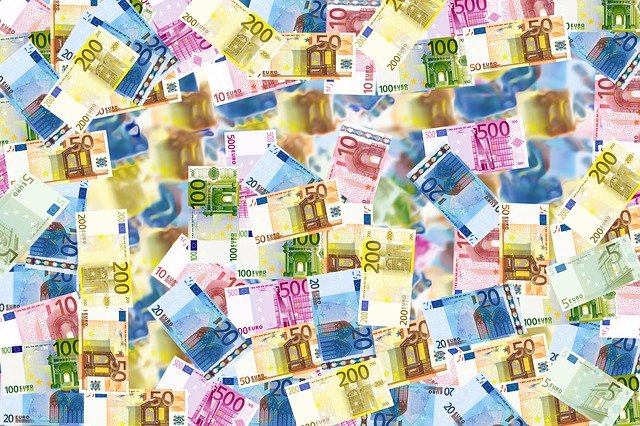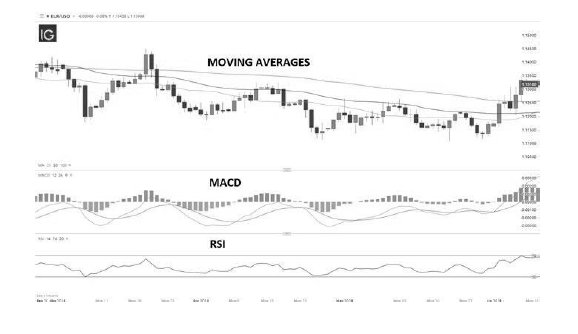|
Technical Analysis - Why Technical Analysis Is Beneficial to Traders
Technical analysis has become popular among dealers as a useful tool for managing risk, which can be a major barrier. Technical analysis is a flexible rational tool once a trader understands its principles and uses it on a variety of markets. Technical analysis seeks to identify patterns that can be usefully produced by the essentials, while key analysis seeks to identify characteristic value in a market. The following list of benefits of using technical analysis includes: can be used at any time and on any market. Technical analysis is a method that can be used on its own. helps traders identify trends they are looking for.
0 Comments
Technical Analysis - Knowledge of Technical Analysis
Technical analysis involves comprehending chart instances. To discern trading opportunities based on fundamental examples on the lookout, traders use crucial information, including price and volume. Indicators of all kinds are applied to charts to determine sections and leave emphases for traders to increase a trade's potential at high risk/reward ratios. An example of a diagram using the MACD and RSI indicators is shown in the image below. Technical analysis traders maintain past patterns that can aid in anticipating future price movements, even though investors in technical analysis acknowledge that financial factors are the primary drivers of market movements. Understanding the differences between principal and technical analysis—and how to combine them—can be very useful, even though these exchanging styles are subject to change. Technical Analysis – What is Technical Analysis?
In part because of advancements in charting bundles and trading platforms, technical analysis is becoming an increasingly popular approach to trading. In any case, it can be overwhelming and challenging for a novice trader to comprehend technical analysis and how it helps to spot emerging trends. Technical analysis examines how a market's price changes, and traders use eye-catching chart patterns and signs to forecast emerging trends. It is a graphic depiction of a market's execution over time. Before placing a trade, it enables the trader to use this data as price activity, indicators, and examples to guide and teach future patterns. Technical Analysis - Technical Analysis vs Fundamental Analysis
While fundamental analysis and technical analysis share some similarities, they vary in methodology. Understanding both of these components of market analysis is crucial. Charts, market indicators, and other instruments are used by technical analysts to forecast future price movements. They examine historical patterns of supply and demand as well as the volume of transaction for a specific stock or index. Fundamental analysts, on the other hand, concentrate their attention on the company's finances and economic information about the sectors (also known as markets) for which the stocks trade. They are worried about things like company earnings announcements, profit margins, unemployment rates, and GDP growth rates. They look at these economic variables to see how they will impact the supply and demand for a specific commodity. Technical analysis focuses more on a stock's or index's price changes by looking at previous trading activity records. A technical analyst uses historical data to forecast future market trajectories. They think that prior performance is the best predictor of future outcomes and that history tends to repeat itself in the stock market. The main distinction between these 2 strategies is who is in charge, whether on a basic or technical level. Technical analysis looks at aspects that a business has no direct control over. For instance, whether or not people are optimistic about a company's future has a constant impact on stock prices. A stock's price will usually increase if many people are purchasing it. People are upbeat about that company because they believe it has room to grow in the future. Sadly, the features of fundamental analysis do not directly influence how keenly people are interested in purchasing a company or how high they may set their hopes for future development. Fundamental analysts look to earnings reports and other information published by businesses that give some indication of how well or badly they are performing in order to provide this kind of insight into its performance. The fundamental analyst examines the performance of the business as a whole and attempts to gain a general understanding of how the market responds to these reports. On the other hand, a technical expert is more focused on the stock's historical performance and charts this information to forecast its future movement. This research makes use of a wide range of instruments and charts, including bar, line, and candlestick diagrams. By drawing trend lines through notable highs or lows in price moves on a chart, traders can determine the strength or weakness of support or resistance levels, for example. Trend lines are used to pinpoint the best market entry and exit spots. Although the real charting tools used vary from one technical analysis tool to another, each one offers a different perspective on the past. Investors can use technical analysis to help them determine whether a potential purchase is worthwhile. The previous performance of a stock can be used to predict its future value. Investors may have cause to think that the price will move back up towards $20 per share rather than breaking through the support level, for instance, if a stock has historically closed at $20 per share and it drops to $15 per share. |
AuthorAnything you need to know about finance, money and business Archives
May 2023
Categories
All
|


 RSS Feed
RSS Feed